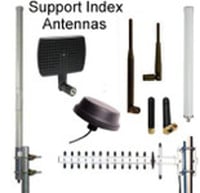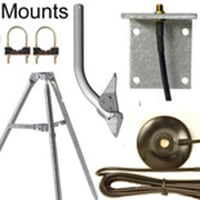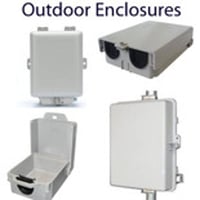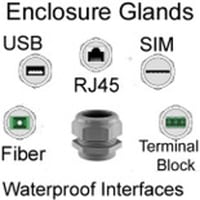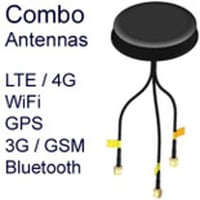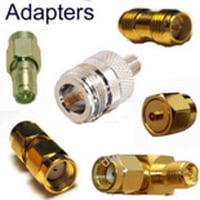Alfa Boards and Routers
Wireless Access Points
Abbreviated as WAP or AP, a Wireless Access Point, is a hardware device on a local area network which allows wired networks and devices with the wireless capability to connect via a wireless standard such as WiFi or Bluetooth. They typically feature antennae and radio transmitters that enable connectivity between different devices and a network or the internet.
WAPs usually have router functionality in at least one of their operating modes, which is why they’re typically referred to as “routers”. They also have firewall capability in at least one of their modes. Wireless access points are commonly used to facilitate connectivity at home, at offices or public places such as shops, train stations, coffee shops, and airports.
Wireless access points are popularly thought of in terms of WiFi, which utilizes the 802 series wireless standards. While there are numerous other wireless standards, many times the terms Wireless access point and WiFi hotspot are used synonymously.
Modes of Wireless Access Points
Most wireless access points can serve as access points for clients. Others have additional wireless modes which you can use to introduce multiple access points to your network, extend the range or bridge different network segments. Below is a quick look are different modes of Wireless Access Points.
- AP mode: This is the most common and default mode that comes with all wireless routers. In this mode, the router acts as a central point of connection which allows wireless clients to connect to it. This connection makes both wireless and wired clients to appear as if they are on the same network.
- Client mode: This mode works the same as a wireless card that clients use. This is used when you need to connect various LAN users in an office, building or home via a wireless link. You can also use it to connect a subnet to a remote access point.
- Wireless Bridge: ModeThis mode allows one access point to connect to another access point that has point-to-point bridging capability. The connection is usually protected against unauthorized access by other devices. This could be used if, for instance, you want to connect two buildings via a wireless connection.
- Wired bridge mode: This mode is used to connect two routers where one acts as a router and the other is set up in bridge mode. For instance, if you install an Ubiquiti or MikroTik router as a bridge, you can quickly take advantage of supper fast WiFi speeds on devices that typically don’t have native gigabit WiFi. You can also connect various devices such as a Smart TV, NAS, game console or a Blu-ray player at gigabit speeds.
Wireless Bridges for Point to Point Links & Point or Multipoint Links
A wireless bridge is a network hardware device used to connect two different LAN (local area network) segments. It does this by bridging the wireless connectivity between the two devices. It works more or less like the wired network bridge by connecting LANS that are located at different locations or are separated logically. Data Alliance carries Ubiquiti, Mimosa and IgniteNet bridges.
- Long-distance point to point links: Ubiquiti offers several types of bridges that are excellent options:
- The PowerBeam series is the best equipment for low-cost point-to-point links, of up to 6 miles (depending on congestion), if high throughput is not needed: One PowerBeam on each end of the link.
- For very long-distance links (over 7 miles): Use a Ubiquiti RocketM5 with a RocketDish on each side of the link:
- Use the 30dBi RocketDish (2-FT diameter) for less than 20 miles.
- For more than 20 miles, use the RocketDish 34dBi, which is 3-FT in diameter.
- Point-to-point bridges: Antenna-type used in a is parabolic-type antenna.
- Parabolics are also known as "dish" or "grid"antennas. Grid or dish antennas are far better than Yagi for point to point.
- Ubiquiti bridges have a parabolic antenna integrated as part of the bridge.
- Point-to-multipoint bridges: Antenna-type used is typically sectoral or panel antenna, but yagi antennas can be used.
- For long point-to-point to multipoint links to end-users (such as a marina): RocketM2 with a large 2.4GHz sectoral antenna
- For long point-to-multi-point links to locations such as a building: Use Ubiquiti RocketM5 with a large 5GHz sectoral antenna
- Point-to-multipoint bridge using Ubiquiti NanoSation M5 (5GHz) passing signal through 3 or 4 walls in an apartment building with NanoStation M5 on each end
- WiFi Frequency Ranges: 2.4GHz, 5GHz, 900MHz: Uses, advantages & disadvantages of each frequency band
If you are not an expert, and you are experimenting with trying to make a very long-distance link: Try this:
- Use signal booster with a high-gain antenna on one end: See example network diagram. Test and if it's not enough signal-strength; put a high-gain antenna on both ends.
- If it's not enough signal-strength: Put a high-gain grid antenna (such as the A24 Grid Antenna above-left) on both ends.
- 4Gbps throughput achieved by 4x4 MIMO, Dual Link, Beamforming & "Auto Everything" technologies:
- Range up to 100-km. Throughput over long distances of approximately 1Gbps, even with congestion in 5GHz band
- See link examples: Range and throughput
OpenWRT: Enable Sophisticated Features on a very Low-Cost Router Board, AP or Router.
- OpenWRT is a Linux-based firmware that is an alternative to the manufacturer's firmware.
- OpenWRT is free (it is actively developed as Open Source software) and yet it has most of the sophisticated features that one would expect in a high-end router.
- Open-WRT is an evolution from DD-WRT, which runs on the Linksys WRT54G: This LinkSys model was manufactured from about 2002 and this model was discontinued by Cisco LinkSys around 2006.
Benefits (if supported by the router hardware)
Open-WRT has almost every feature one could ask for or will ever need – features often only found on “enterprise” routers like Cisco and MikroTik – but with a GUI. Open-WRT is arguably the best operating system for a SOHO AP/router (small office / home office)
- Use all the hardware's capabilities: Full control of your router hardware - not just what the manufacturer allows.
- Create multiple wireless networks, multiple SSIDs. For example: Create a guest access WLAN.
- Create multiple physical networks, using VLAN techniques: You can create a separate network for the neighbor, your kids computers or those game consoles that need all ports forwarded and you just cannot trust.
- Use standard IP tables for firewall and packet (QoS) marking / tagging rules.
- Apply QoS using advanced packet shaping and policing techniques
- Install additional software on your broadband router to make it a web server, bit-torrent client or audio streamer for example, or all of that and more.
- Probably more secure than standard firmware. Because it is open source, it is probably more secure and better in respect to your privacy than the stock firmware from the factory: There are legions of developers looking at the same OpenWrt code.
- See also "Millions" of Home Routers Vulnerable To Web Hack.
- PPoE client / DSL client: Solve limitations/restrictions of DSL modems, simplify, & save IPs
- Reduce number of public IP addresses required by 1 or 2.
- Assign your 1 public/static IP to your SOHO router rather than your DSL router
- RDP access behind DSL modems that block RDP (Terminal Services / RDC)
- OpenWRT Default IP address on some versions it is: 192.168.1.1/24 and on others it is 192.168.2.1/24
- WiFi is disabled by default

